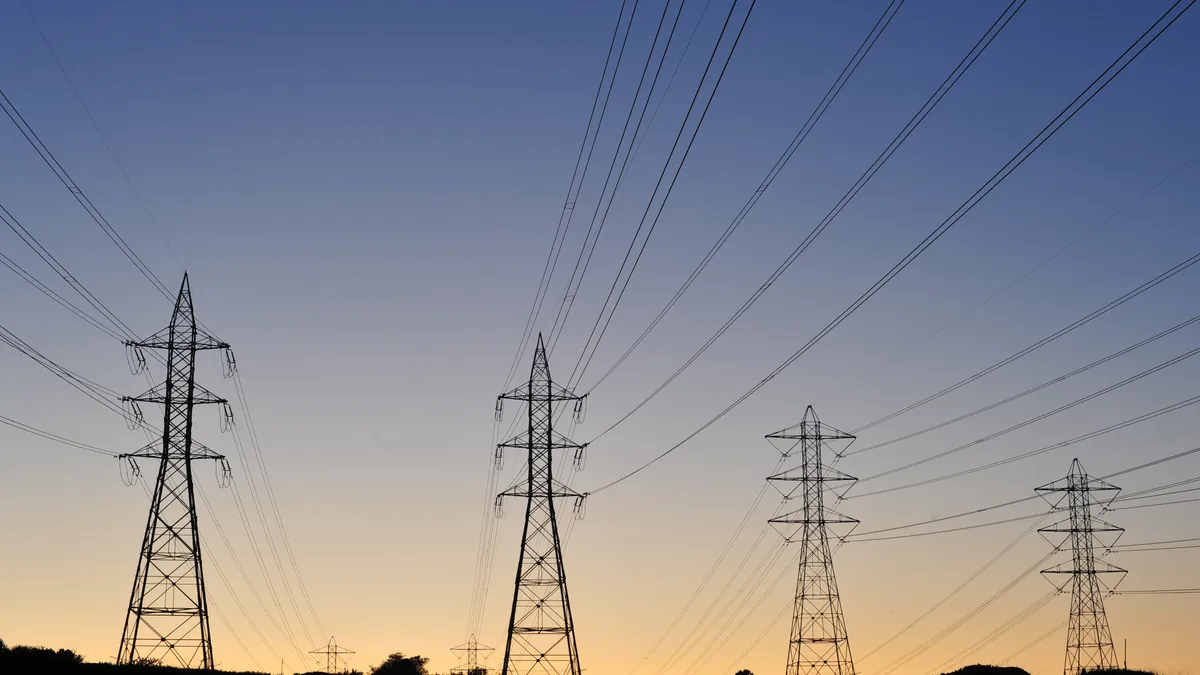Dive Brief:
- The Midcontinent Independent System Operator (MISO) and Southwest Power Pool (SPP) on Monday announced a year-long transmission study to address generation interconnection challenges, looking to "identify comprehensive, cost effective and efficient upgrades" along the areas where the regional grids connect.
- There are thousands of megawatts of renewable energy that cannot be developed in those areas, known as "seams," due to differences in how the regional transmission organizations (RTOs) model project benefits and generation dispatch, say experts. The differences contribute to interconnection studies that call for high-cost transmission upgrades in order to connect proposed wind and solar projects.
- The transmission study will likely focus on synchronizing modeling inputs and assumptions between MISO and SPP in order to "find benefits to customers on both sides of the seam," said Clean Grid Alliance Executive Director Beth Soholt. Resolving the issue will ultimately give utilities a cheaper path to meet clean energy and carbon reduction goals, she said.
Dive Insight:
When renewable developers propose new projects, grid operators undertake interconnection studies to determine what system upgrades are needed to move the power to customers — along with how much those upgrades will cost, and what benefits they will provide.
"A fundamental issue facing grid transformation is the lack of transmission at requested connection points," SPP President and CEO Barbara Sugg said in a statement. "Working together, MISO and SPP can target those areas where there are mutual benefits on both sides of our seams."
For a variety of reasons, say clean energy experts, the projects needed to move new clean energy are not showing up as cost-effective, meaning their costs would need to be shouldered by the generation developer. With some transmission upgrade costs running hundreds of millions of dollars, experts say this often means new wind and solar projects are scrapped.
"We've seen for a number of years now, that the cost of seams upgrades that have been identified are large," said Soholt. The MISO-SPP transmission study, she said, will look for customer benefits on both sides of the seam which could make more projects cost effective and in turn lead to more development.
"One of the barriers to getting this done has been that the RTOs had a different planing process," said Soholt. "Their models weren't the same, and they had trouble agreeing on the inputs for the models."
According to Daniel Hall, central region director of electricity and transmission for the American Wind Energy Association, there are about 107 GW of generation in the MISO interconnection queue and 105 GW in SPP — of which maybe 80% is wind and solar. The grid operators' new transmission study wont allow all of those projects to interconnect, but it could help bring some online he said.
"There is clearly a significant amount of generation that wants to interconnect," said Hall. "Frequently, utilities are interested in building or buying it, so there is clearly benefit to the ratepayers. But when MISO and SPP run models, those projects are not showing up" as cost effective.
Hall said clean energy advocates and developers are hoping for an agreement between the grid operators to use joint assumptions, methodologies and maybe even to undertake joint modeling. He called the new study "an unprecedented effort ... to try and solve a very serious problem that has been facing the renewable community and consumers in general."
The seams issue is not new, though grid operators have been working to address it. MISO has an active stakeholder discussion about how to evaluate projects to see if they can be cost-allocated as market efficiencies.
The new transmission study is "encouraging from the standpoint of planning for a clean energy grid," said Rob Gramlich, executive director of Americans for a Clean Energy Grid. "State regulators, [the Federal Energy Regulatory Commission], and a lot of stakeholders have been asking for this for a long time."
MISO and SPP say the joint study will focus on solutions that will offer benefits to both their interconnection customers and the end use consumers of RTO member companies. While MISO and SPP have an existing Joint Operating Agreement that allows them to work through reliability issues, the operators said "existing processes do not include the simultaneous evaluation of benefits, or allocation of cost, to both load and interconnection customers."
"Our member companies and stakeholders have told us that we need a better solution that prioritizes projects that address these gaps," MISO CEO John Bear said in a statement. "Collaborating in this way gives us the opportunity to explore potential improvements within our own interconnection processes while informing longer-term regional transmission planning efforts."
MISO and SPP's existing interconnection processes will continue, and the transmission study will run parallel to those. Projects identified as cost-effective by the joint study will still need to be approved by the an RTO's board of directors before they can move ahead.
The grid operators said they anticipate formally launching the study in December, and that it will include multiple joint stakeholder meetings.














